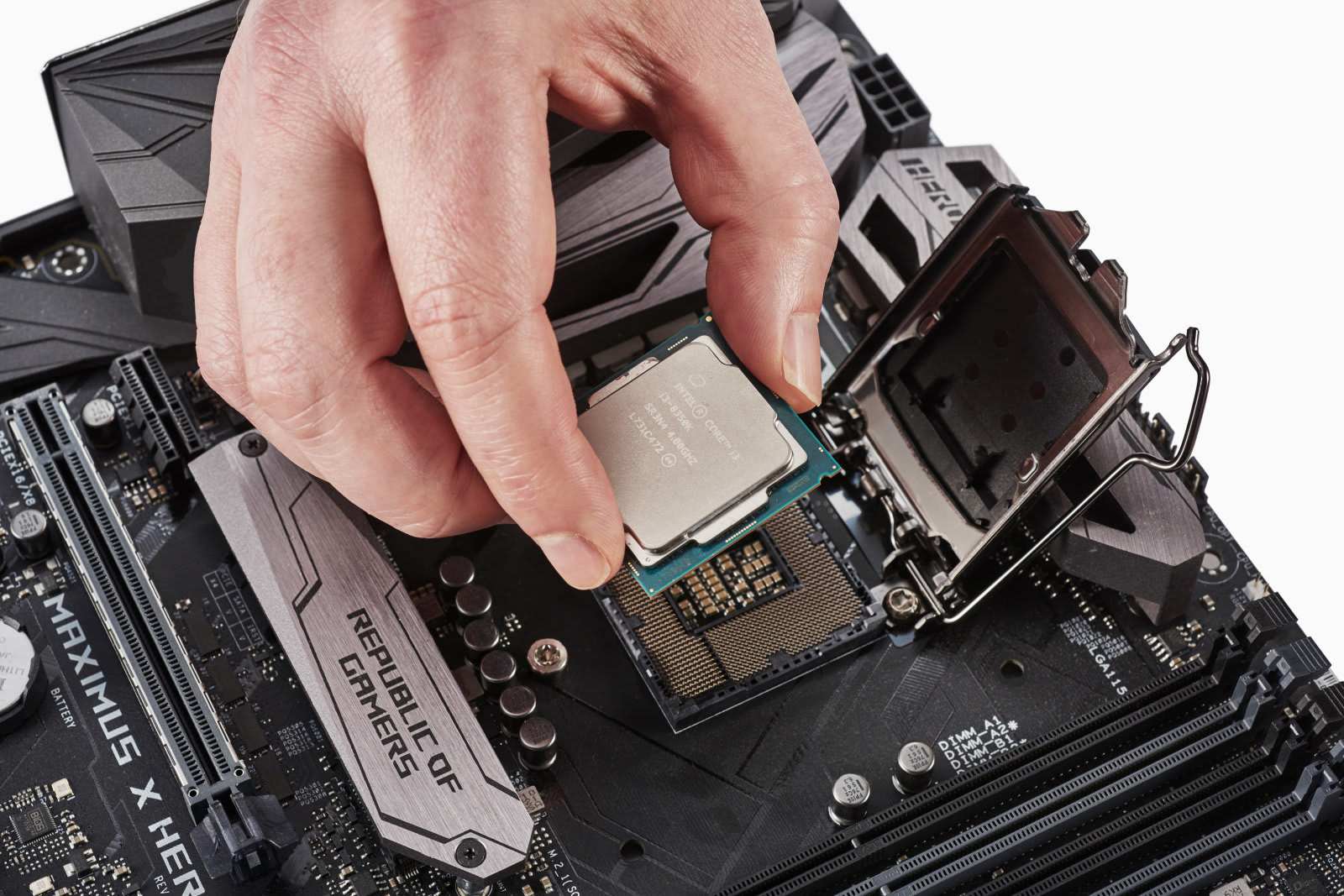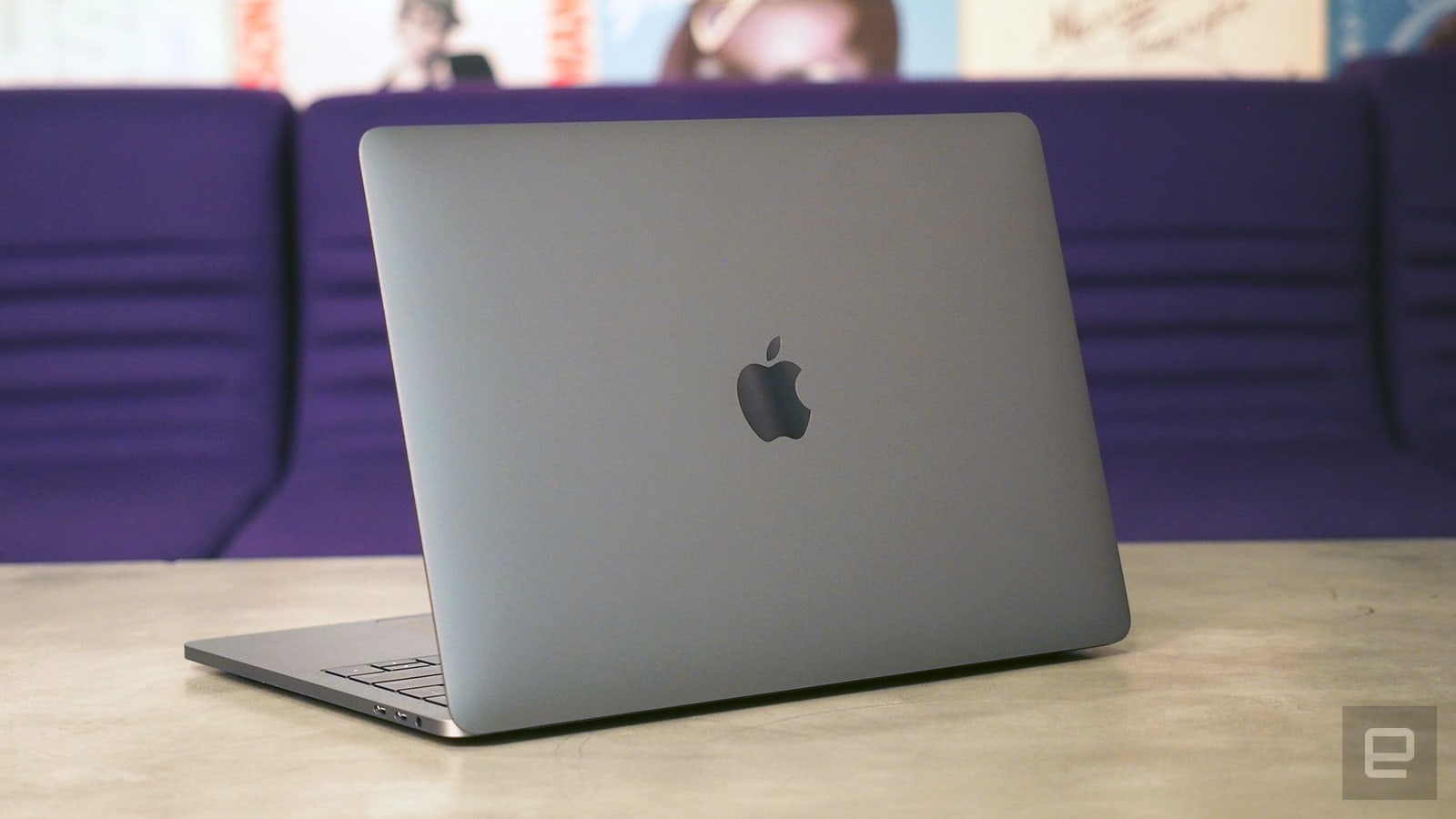Tag Archives: chipsets
Commerce Department cuts off China’s biggest chipmaker from US tech
MediaTek’s latest Chromebook chipsets balance battery life and power
Researchers discover that Intel chips have an unfixable security flaw
 Security researchers have discovered another flaw in recent Intel chips that, while difficult to exploit, is completely unpatchable. The vulnerability is within Intel's Converged Security and Management Engine (CSME), a part of the chip that controls...
Security researchers have discovered another flaw in recent Intel chips that, while difficult to exploit, is completely unpatchable. The vulnerability is within Intel's Converged Security and Management Engine (CSME), a part of the chip that controls...
Apple will reportedly replace Intel chips in Macs with its own in 2020
 Apple has been manufacturing chips to use in its Macs for a while now, though the ARM-based silicon mostly backs up Intel's main CPUs during laptop "Power Nap" sessions. The company also makes its own silicon for iOS and Apple Watch devices. Now, acc...
Apple has been manufacturing chips to use in its Macs for a while now, though the ARM-based silicon mostly backs up Intel's main CPUs during laptop "Power Nap" sessions. The company also makes its own silicon for iOS and Apple Watch devices. Now, acc...
Qualcomm Snapdragon 660 and 630 Chipsets Announced:
ARM’s Mali-T604 makes official debut, we get a first look at the next-gen GPU (hands-on video)
Think those are some pretty slick graphics in your Galaxy S III? Samsung's latest smartphone packs some mighty graphics prowess of its own, thanks to the Mali-400 MP GPU, but once you spend a few minutes with the Mali-T604, the company's next-generation chipset, the improvements become quite clear. After seeing the Mali-T604 in action, as we did at SIGGRAPH today, the capabilities leave us hopeful for the future, and perhaps feeling a bit self-conscious about the silicon currently in our pockets. The reference device on hand was operating in sync with a variety of unnamed hardware, protected from view in a relatively large sealed box. We weren't able to squeeze many details out of ARM reps, who remained mum about the demo components, including clock speed, manufacturer and even fabrication size. What we do know is that we were looking at a quad-core Mali-T604 and dual-core ARM Cortex-A15 processor, with a fabrication size in the range of "28 to 40 nanometers" (confirming the exact size would reveal the manufacturer). Clock speed is also TBD, and the early silicon on demo at the show wasn't operating anywhere close to its top end.
In order to experience the T604, we took a look at three demos, including Timbuktu 2, which demonstrates elements like self shadowing and depth of field with OpenGL ES 3.0, Hauntheim, which gives us an early look at physics simulation and HDR lighting with OpenCL, and Enlighten, which rendered silky smooth real-time illumination. You can see all of the demos in action after the break, and you can expect T604-equipped devices to make their debut beginning later this year -- ARM says its working with eight manufacturers to get the licensed tech to market as early as Q3.
Filed under: Cellphones, Displays, Gaming, Tablet PCs
ARM's Mali-T604 makes official debut, we get a first look at the next-gen GPU (hands-on video) originally appeared on Engadget on Tue, 07 Aug 2012 13:30:00 EDT. Please see our terms for use of feeds.
Permalink | | Email this | CommentsQualcomm enlists Samsung, UMC to help meet 28nm Snapdragon S4 demand
Qualcomm's Snapdragon S4 chipset is certainly hot (well, not too hot), but it looks like demand is expected to grow even further, causing the San Diego-based SoC maker to turn to allies in the east to help beef up supply. According to China Economic News Service, United Microelectronics Corp. (UMC) and Korea-based Samsung will join Taiwan Semiconductor Manufacturing Co. (TSMC) to manufacturer the 28nm chips beginning later this year, in an attempt to increase S4 availability ahead of the Windows RT launch. The article cites Qualcomm CEO Paul Jacobs as saying that a shortage is expected to continue, due to the complicated techniques necessary to manufacturer 28nm chips, and that the company may consider adding its own manufacturing plant in the future. All in all, it doesn't seem like a terrible position for QCOM to be in. Full details are at the Taiwanese source link below.
Qualcomm enlists Samsung, UMC to help meet 28nm Snapdragon S4 demand originally appeared on Engadget on Wed, 04 Jul 2012 16:34:00 EDT. Please see our terms for use of feeds.
Permalink SlashGear |
SlashGear |  China Economic News Service | Email this | Comments
China Economic News Service | Email this | Comments Micron scoops up Elpida Memory, 50-percent production boost for $2.5 billion
There's no question that Micron has shifted its focus away from PCs in favor of producing components, shipping everything from SSDs to CMOS sensors in recent years, but the semiconductor manufacturer just took a $2.5 billion step even closer to bridging its gap between other companies in the same market, including Samsung, the chip producer's top competitor. Under the deal, Elpida Memory, which is headquartered in Tokyo, will fall within the Idaho-based conglomerate's growing umbrella, netting Micron a 50-percent boost in production capability. That increase did come at great expense, however -- the transaction included $750 million in cash and $1.75 billion in future installments (1,750 easy payments of one million dollars?), which are set to continue through 2019. The acquisition was also paired with a 24-percent stake in Rexchip Electronics for an additional $334 million, which will complement Elpida's investment, yielding a total 89-percent stake for Micron. While the amount does seem quite significant, investors appear to be on board, with Micron's stock ($MU) currently up more than 4 percent since this morning. Both deals will reportedly close within the next year.
Micron scoops up Elpida Memory, 50-percent production boost for $2.5 billion originally appeared on Engadget on Mon, 02 Jul 2012 19:39:00 EDT. Please see our terms for use of feeds.
Permalink | Associated Press | Email this | Comments
Associated Press | Email this | Comments Engadget Primed: why nanometers matter (and why they often don’t)
Primed goes in-depth on the technobabble you hear on Engadget every day -- we dig deep into each topic's history and how it benefits our lives. You can follow the series here. Looking to suggest a piece of technology for us to break down? Drop us a line at primed *at* engadget *dawt* com.
Welcome to one of the most unnecessarily complicated questions in the world of silicon-controlled gadgets: should a savvy customer care about the underlying nature of the processor in their next purchase? Theoretically at least, the answer is obvious. Whether it's a CPU, graphics card, smartphone or tricorder, it'll always receive the Holy Grail combo of greater performance and reduced power consumption if it's built around a chip with a smaller fabrication process. That's because, as transistors get tinier and more tightly packed, electrons don't have to travel so far when moving between them -- saving both time and energy. In other words, a phone with a 28-nanometer (nm) processor ought to be fundamentally superior to one with a 45nm chip, and a PC running on silicon with features etched at 22nm should deliver more performance-per-watt than a 32nm rival.
But if that's true, isn't it equally sensible to focus on the end results? Instead of getting bogged down in semiconductor theory, we may as well let Moore's Law churn away in the background while we judge products based on their overall user experience. Wouldn't that make for an easier life? Well, maybe, but whichever way you look at it, it's hard to stop this subject descending into pure philosophy, on a par with other yawnsome puzzles like whether meat-eaters should visit an abattoir at least once, or whether it's better to medicate the ailment or the person. Bearing that in mind, we're going to look at how some key players in the silicon industry treat this topic, and we'll try to deliver some practical, offal-free information in the process.
Continue reading Engadget Primed: why nanometers matter (and why they often don't)
Engadget Primed: why nanometers matter (and why they often don't) originally appeared on Engadget on Fri, 15 Jun 2012 14:00:00 EDT. Please see our terms for use of feeds.
Permalink | | Email this | Comments








